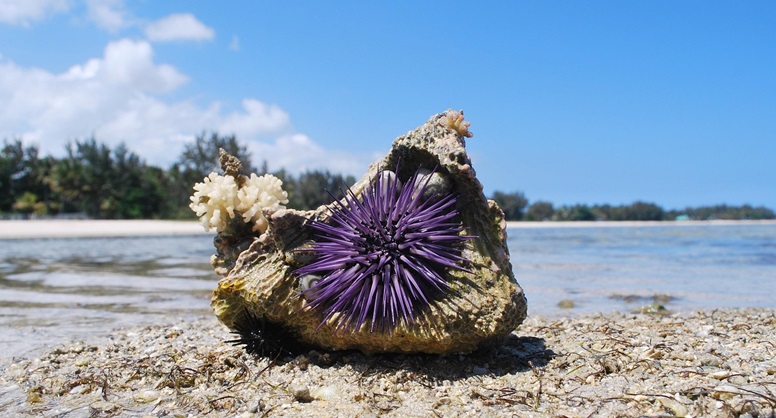Student Researchers Sharpen Their Skills at the Center for the Blue Economy
| by Caitlin Fillmore
Students put their skills to work and get a career head start in innovative roles in ocean research at the center based at the Middlebury Institute.

Could artichokes soon face competition from another spiky, purple California cash crop?
Following a devastating heat wave from 2014 to 2016 that disrupted the ecological balance in Monterey Bay’s National Marine Sanctuary, the sea urchin population boomed. That decimated the integral ecosystem of kelp forests. Then, after eating everything, the urchins shriveled up and hibernated. In that state, they offered offered no nutritional value, either for predators or for humans who delight in exotic uni, a delicacy.
Can scientists restore the ecological balance of the bay’s vital kelp forests while also developing a new cash crop from a readily available specialty food?

That was the question that the Middlebury Institute’s Center for the Blue Economy researched, assessing economic viability by tracking “everything from man-hours to facility costs.”
“We looked into the economic feasibility of the whole process and how to scale it so we can really bring this to people in California and anyone else that wants to do an urchin ranching startup,” said Middlebury Institute’s Charles Cogan, director of research for the Center for the Blue Economy.
Read Sea Urchin Ranching on Edible Monterey Bay’s website.
| by Caitlin Fillmore
Students put their skills to work and get a career head start in innovative roles in ocean research at the center based at the Middlebury Institute.
| by Mark C. Anderson
The current food system is about as bad as it gets, but environmental studies Professor Jason Scorse says individuals looking to make an impact on climate can start with smarter eating.
| by Mark C. Anderson
Through a partnership with several world-class marine labs, environmental policy and management faculty and students are working to enlighten the public on the importance and elegance of apex predators.